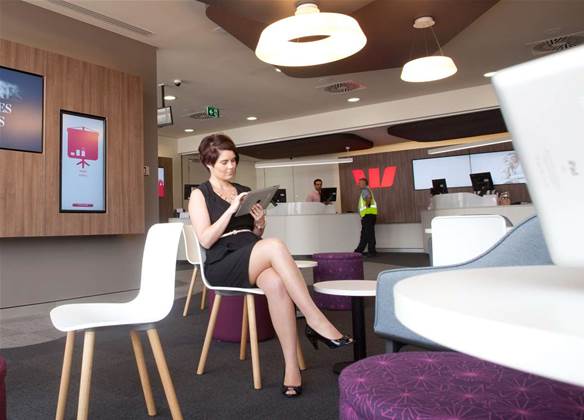Westpac has soft-launched its new online and mobile banking platform, with around 4500 users brought onto the system in the past month.

The banking giant revealed today at its annual results announcement the platform is currently in use and will be rolled out progressively over the next year, ahead of full completion by the end of full year 2014.
Most of the 4500 using the system are Westpac staff. The bank declined to provide names and figures for the external customers using the new platform.
Westpac began piloting the Fiserv-based platform in November 2012, according to its first half 2013 results.
According to Westpac, the online and mobile banking system will provide customers with access to real-time, running account balances; real-time displays of credit card purchases; the ability to search up to three years of transaction history; and mobile access to statements, interest rates and tax information.
Customers will also be able to change ATM limits, request a mortgage top-up and notify the bank when travelling overseas. The bank said it currently has over 2 million active mobile customers.
SIP savings
The program underpinning the online and mobile banking platform overhaul, the bank’s five-year strategic investments program (SIP), is “drawing to a close”, the bank said today.
One of the final initatives to be completed under the program is Westpac’s move to a new Fujitsu data centre in Western Sydney. That migration is “progressing well” and will be completed during 2015, the bank said.
The infrastructure migration, along with virtualisation efforts, had resulted in a drop in the average number of “severity 1” incidents from over 30 per month in 2008 to less than four in the full year 2013.
The bank has spent $203 million this year on the SIP agenda, and said it had saved $189 million since the program’s introduction four years ago.
Over its life thus far, the program has seen the $80 million rollout of the Spider call centre and teller platform, which had previously been in use at St George; the introduction of a system access layer to “simplify front to back-end system linkages”; and simplified and stabilised IT infrastructure.
Phase two focus
Westpac is now focusing on phase two of its technology initiatives. Where phase one focused on customer channels and infrastructure, phase two will involve modernising key processing systems while enhacing customer channels and infrastructure.
Phase two of the SIP agenda is expected to cost the same as phase one, which is likely to come in at $2 billion.
It will see Westpac upgrade to a new wealth platform, which is already in development; upgrade its payments systems; upgrade its core banking system to the Hogan platform in place at St George; and build out technology to support its Asian expansion.
Westpac will spend an expected $250 million upgrading the Hogan platform, built by CSC, to a new version called Celeriti. Migration is expected to start next year.
Desktop restart?
Westpac also signalled phase two will involve delivering "enhanced workplace infrastructure to accommodate new ways of working."
In January 2012, iTnews revealed Westpac had postponed a $20 million technology refresh which would have implemented a consistent desktop experience across the bank.
It meant the majority of Westpac staff were left running outdated technology such as Microsoft's 12-year old web browser Internet Explorer 6.
iTnews is seeking comment on whether the phase two activity constitutes a resurrection of the desktop project.
Westpac recorded a 14 percent rise in net profit for its full year 2013 to $6.8 billion.



_(20).jpg&h=140&w=231&c=1&s=0)
_(22).jpg&h=140&w=231&c=1&s=0)






 iTnews Executive Retreat - Security Leaders Edition
iTnews Executive Retreat - Security Leaders Edition












_(1).jpg&h=140&w=231&c=1&s=0)



